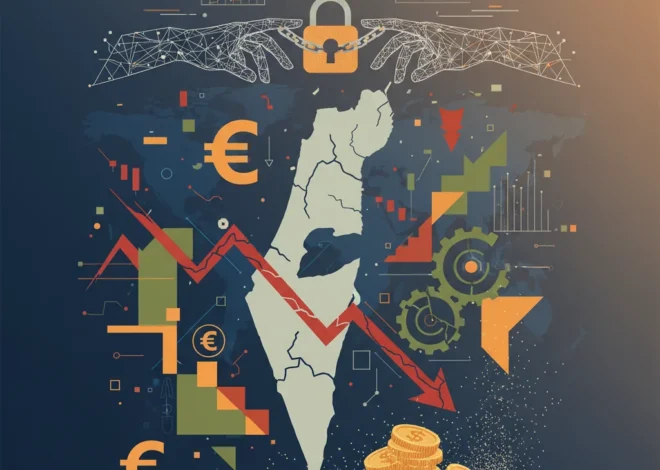
The Trump Put: How a U.S. Election Could Rewrite Argentina’s Economic Future
In the high-stakes world of international finance, narratives can move markets as much as fundamentals. For Argentina, a nation synonymous with economic volatility, a powerful new narrative is taking hold—one that links its fate not just to its own radical reforms, but to the political winds blowing from Washington, D.C. President Javier Milei, the self-described “anarcho-capitalist” wielding a political chainsaw, is undertaking one of the most aggressive economic experiments in modern history. Yet, for many investors, the ultimate backstop for this audacious plan has a familiar name: Donald J. Trump.
The concept of a “Trump Put” for Argentina is rapidly evolving from a fringe theory to a core component of the investment thesis for the South American nation. It suggests that a potential Trump presidency would provide a crucial safety net for Milei’s government, pressuring the International Monetary Fund (IMF) for a new, more favorable deal and unlocking the capital needed to pull the country from the brink. This blog post will dissect this emerging geopolitical and financial dynamic, exploring the foundations of Milei’s shock therapy, the mechanics of the “Trump Put,” and the profound implications for the global economy, banking, and investment strategies.
The Anatomy of an Economic Catastrophe
To understand the appeal of an external savior, one must first grasp the depth of the crisis Javier Milei inherited. Upon taking office in December 2023, he faced an economic landscape in ruins. Argentina was buckling under the weight of problems that had been compounding for decades, exacerbated by the previous Peronist government’s policies.
The headline figure was an annual inflation rate soaring past 200 percent, a devastating tax on the poor and a complete destroyer of savings and economic planning. The central bank’s net foreign currency reserves were not just zero; they were estimated to be over $10 billion in the negative. Compounding this was a labyrinth of currency controls, import restrictions, and price freezes that had paralyzed the economy. Looming over everything was a colossal $44 billion debt to the IMF, the legacy of a failed 2018 bailout, with no clear path to repayment.
Milei’s “Shock Therapy”: A Radical Prescription
Milei’s response was not gradualism but radical, uncompromising economic surgery. His “shock therapy” program, designed to violently wrench the economy onto a sustainable path, included:
- Drastic Fiscal Austerity: He immediately announced spending cuts equivalent to 5 percent of GDP, targeting energy and transport subsidies, halting public works, and slashing the number of government ministries. The goal: a “no-negotiation” fiscal surplus for 2024.
- Currency Devaluation: The official peso-to-dollar exchange rate was devalued by over 50 percent overnight to close the gap with parallel market rates and boost export competitiveness.
- Deregulation: A sweeping emergency decree aimed to dismantle decades of protectionist policies, liberalize labor laws, and open the economy to competition.
These measures are intentionally painful, designed to crush inflation by eliminating its root cause: rampant money printing to finance government deficits. The short-term consequences are severe—a deep recession and a sharp drop in real wages. The political risk is immense, as Milei governs without a congressional majority, relying on public patience that could easily wear thin.
The British Economic Paradox: Why a Stagnant Economy Feels Surprisingly Stable
To visualize the challenge and the stated goals of Milei’s administration, consider the following key economic indicators:
| Economic Indicator | Situation Inherited (Late 2023) | Milei Administration’s Goal/Initial Action |
|---|---|---|
| Annual Inflation Rate | ~211% | Reduce to single digits through fiscal discipline (long-term goal) |
| Primary Fiscal Balance | Deficit of ~3% of GDP | Achieve a surplus of 2% of GDP in 2024 |
| Central Bank Net Reserves | Negative ~$11 billion | Rebuild reserves through trade surplus and capital inflows |
| IMF Program | Off-track, with $44 billion outstanding | Get program back on track; potentially seek new funds |
The “Trump Put”: An Unlikely Financial Lifeline
While Milei’s domestic reforms are the primary engine of change, the “Trump Put” has become the talk of Wall Street trading desks and Buenos Aires cafes. This theory rests on two pillars: ideological alignment and the United States’ immense power over international financial institutions.
Milei and Trump are cut from a similar political cloth. Both are populist outsiders who ran against the “political caste,” championing nationalism and free-market principles while expressing deep skepticism of globalist institutions. Milei has been an outspoken admirer of Trump, making him a natural ally in a way that few other world leaders are.
This ideological kinship is more than just rhetoric; it has tangible implications for Argentina’s relationship with the IMF. The U.S. is the IMF’s largest shareholder and the only member with effective veto power over major decisions. A Trump administration, deeply critical of the IMF’s traditional approach, could instruct its Treasury Department to champion Argentina’s cause. As one analyst noted, “The Trump team instinctively likes Milei and what he is doing… they will be much more willing to tell the IMF to take a risk on Argentina” (source). This could translate into a new loan program of $10-15 billion, capital that would be instrumental in stabilizing the economy and eventually lifting currency controls.
Market Reaction: Pricing in a Political Shift
The financial markets have been quick to react to this dual narrative of internal reform and external support. Argentine sovereign bonds, which were trading for as little as 20 cents on the dollar, have rallied dramatically, surpassing 50 cents in early 2024. This surge reflects a significant repricing of risk. Investors are betting that Milei’s fiscal discipline will prevent a default and that a potential Trump-backed IMF deal will provide the liquidity needed to navigate the turbulent transition.
This renewed confidence is a critical component of Milei’s strategy. A rising stock market and appreciating bond prices create a positive wealth effect and make it easier for the government and Argentine corporations to access international capital markets. The performance of these assets is now inextricably linked to U.S. election polls, with traders and analysts watching the political developments in America as closely as they watch inflation data from Buenos Aires. According to a fund manager, investors are increasingly confident that a Trump administration would “lean on the IMF to give Milei the money” (source), turning a political probability into a financial reality.
Frozen Assets, Fiery Debate: Unpacking the €140 Billion Standoff Over Russia's Wealth
The Ultimate Goal: Dollarization and the Future of Argentine Finance
For Milei, stabilizing the economy is just the first step. His ultimate, and most controversial, ambition is to abolish the central bank and dollarize the economy, permanently ending Argentina’s addiction to the monetary printing press. This is a monumental task that would require tens of billions of dollars in reserves to swap the existing peso monetary base for U.S. dollars.
Here, the “Trump Put” becomes indispensable. A fresh $15 billion loan from the IMF, facilitated by a friendly U.S. administration, would be the cornerstone of any viable dollarization plan. It would provide the hard currency needed to back the transition and give the markets confidence that the new monetary regime is sustainable.
This radical shift in economics also opens the door to innovations in financial technology. As Argentina looks to rebuild its shattered banking and credit systems, there is immense potential for fintech solutions to flourish. A stable, dollarized economy could accelerate the adoption of everything from digital payments to blockchain-based asset registries, leapfrogging legacy systems. While not a central part of Milei’s current discourse, a modernized financial technology backbone would be a natural consequence of a successful stabilization program.
UBS's Private Credit Headache, Wall Street's Crypto Gamble, and a Saudi Reality Check
Conclusion: A High-Stakes Symbiosis
Argentina’s economic fate is now a fascinating case study at the intersection of radical economics, populist politics, and global finance. Javier Milei has embarked on a perilous journey to cure his nation’s chronic economic illness with the strongest medicine available. His success, however, may depend on a political lifeline from an ideological ally 5,000 miles away.
For investors, business leaders, and finance professionals, the situation is a complex tapestry of risk and opportunity. The “Trump Put” has introduced a powerful new variable into the equation, providing a potential hedge against the immense execution risks of Milei’s plan. The coming months will be a test of both Argentina’s domestic resolve and the shifting plates of international politics. Whether this unlikely symbiosis leads to Argentina’s economic rebirth or proves to be a fleeting political fantasy will be one of the most compelling stories in the global economy.


